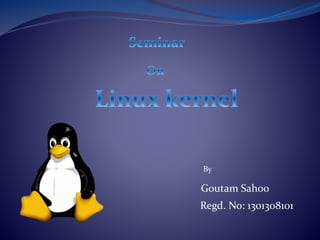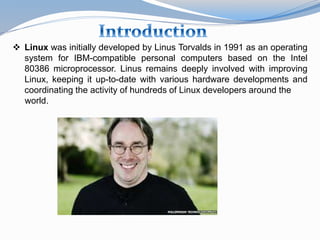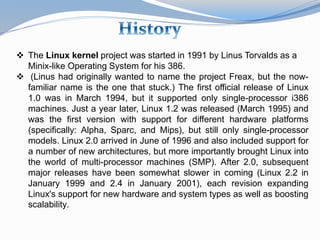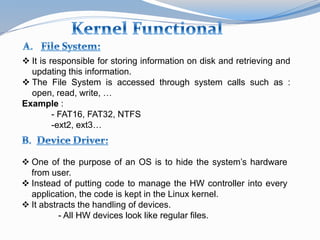The document details the history and evolution of the Linux kernel, initiated by Linus Torvalds in 1991, transitioning from a single-processor system to supporting multi-processor architectures and various hardware platforms. It discusses the kernel's role in managing system resources, file systems, and processes, highlighting its modular structure and the continuous contributions from developers. The success of Linux is attributed to its community-driven development model, fostering a collaborative environment for enhancements and adaptations to meet real-world needs.


















